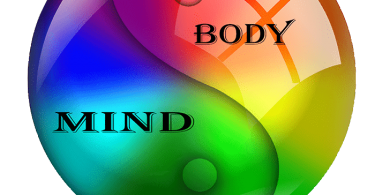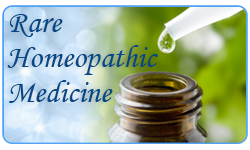
Abstract
Various authors have done the study on essential hypertension as a psychosomatic disorder; But this study attempts to demonstrate the connections between psyche and soma; study the significant life events, causative factors, dispositional qualities, psychological conflicts and defense mechanism used in cases of essential hypertension. Remedies matching this would enhance the knowledge of psychodynamic and psychosomatic nature of the remedies.
Keywords: psychodynamic, psychosomatic, homoeopathic remedies
Abbreviations: MIL-DIL-mother in law-daughter in law, OPD-out patient department, IPD- in-patient department, Hg – mercury.
Introduction
Essential hypertension was one of the seven classic psychosomatic diseases for which psychoanalytical investigators have proposed psychodynamic etiologies. In considerable proportion of cases, the disease tends to be asymptomatic for prolonged time, hence also labelled as silent killer. Hypertension, this silent killer is estimated to affect 1.56 billion worldwide by the year 2025.[1] Modern civilisation has contributed to the stressful or traumatic life situations to which the organism cannot effectively respond. When combined with faulty lifestyle, disturbed equilibrium results in contributing to the development of psychosomatic disorder like essential hypertension, which is seen in 90% of cases and is a highly important public health challenge that remains, however a major modifiable cause of morbidity and mortality. Hence, this study attempts to understand the connection between psyche (mind) and soma (body) and the remedies matching these factors would enhance knowledge of the psychosomatic and psychodynamic of the remedies.
Aim
To understand the psychodynamic and psychosomatic relationship in patients with essential hypertension and study the emerging homoeopathic remedies.
Objectives
- Understanding the psychodynamic and psychosomatic relationship in patients with essential hypertension.
- Studying the group of homoeopathic remedies matching the psychodynamic and psychosomatic in patients with essential hypertension.
Material and methods
- Study setting: – Cases of essential hypertension from the OPD, IPD and peripheral OPD of Rural Homeopathic hospital (Centre of Excellence), Palghar district, Maharashtra, India.
- Sample size and selection of samples: 50 cases meeting inclusion criteria were selected by purposive sampling technique.
- Criteria
Inclusion criteria:
- Cases diagnosed with essential hypertension cases with stage 1 and stage 2- hypertension (stage 1: systolic 140–159 mm Hg, diastolic 90–99 mm Hg; stage 2: systolic 160 mm Hg, diastolic 100 mm Hg.).
- Cases above the age group of 20 years – 65 years.
- Cases of both sexes.
- Cases having significant life events.
Exclusion criteria:
- Cases with known psychiatric illness
- Study design (type of study): prospective qualitative case series.
- Tools used: life space table, psychodynamic and psychosomatic tool.
- Brief procedure:
- Identified cases as per the inclusion and exclusion criteria was taken up for study.
- The screening questionnaire for physician was used for identification of cases.
- Detailed case taking and the checklist to assess the conflicts helped in assessing the psychosomatic aspect.
- Cases processing were done and senior consultant gave prescription.
- The emerging patterns of psychological conflicts, dispositions, causative emotions and defense mechanism seen in cases of hypertension were concluded.
- Correlation of the psychosomatic aspects in the cases with homoeopathic remedy was done.
- Outcome assessment criteria
- Identifying the psychodynamic and psychosomatic relationship in patients with essential hypertension.
- Identifying the remedies matching the psychodynamic and psychosomatic relationship in patients with essential hypertension.
- Statistical technique: The qualitative data was analysed by summarisation technique. Proportion, the mode was used for making a conclusion.
Observations and results
All data were analysed on the basis of objectives of the study.
- Pie chart representation of the gender wise distribution of essential hypertension:

- Comparative line graph representing gender wise age group suffering from essential hypertension:

Males between age group of 46-50 have 10 cases and females 55-60 have 5 cases.
- Tabular representation of significant life events, causative factors, psychological conflicts and dispositional qualities with the emerging remedies in cases of essential hypertension
| Significant life event | Causative emotion | Psychological conflict | Disposition | Defense mechanism | Remedy |
| Husband’s illness, dowry issue, criticised by authority, misuse of money by family member, extramarital affair, misuse of money by family member, death of son | Anticipation, suppressed anger, mortification, vexation, greif [8] | Breakage of bond with loved ones, suppressed anger and dependency | Irritable, reserved,anxious, sensitive to: scolding, comments, criticism [4,5,6,7,8] | Acting out, avoidance , suppression, rationalisation | Natrium muriaticum [4,5,6,7,8] [7 cases] |
| Cheated by students, niece suicide, son being a special child Misuse of money by family member, cheated by relative | Suppressed anger, fright, anticipation,, vexation [8] | Suppressed anger and dependency, role conflict, Self- Image conflict | Anxious, irritable, boaster, ambitious, image-conscious, manipulative [4,5,6,7,8, 11] | Acting out, avoidance, displacement, identification, rationalisation, reaction formation, suppression | Lycopodium [4,5,6,7,8, 11] [5 cases] |
| MIL-DIL – dispute, physical fight for money, death of colleague, no share in property division, criticised by family members | Guilt, vexation, fear of death, indignation [8] | Anger outburst, hostile impulses and dependency | Irritable, obstinate sentimental, impulsive, sensitive to: opposition, comments [6,7,8, 9] | Acting out | Ferrum metallicum [6,7,8, 9] [5 cases] |
| Donation for daughter’s admission in school, son being a special child, death of father- family responsibility on his shoulders, dispute between family and his wife | Anxiety about money matters, anticipation, vexation [8] | Suppressed anger and dependency, self- doubt conflict | Anxious, fearful, indecisive, sensitive to: reprimand, comment [4,5,6,7,8, 9] | Suppression, rationalisation | Calcarea carbonicum [4,5,6,7,8, 9] [4 cases] |
| Son being a special child, staying in a separate house with daughter’s children, death of husband, working in a new project | Anticipation [8] | Acceptance and rejection conflict, self- image conflict, suppressed anger and dependency | Anxious, fearful, shy, image conscious [4,5,6,7,8, 12] | Anticipation, suppression | Silicea [4,5,6,7,8, 12] [4 cases] |
| Bad news of husband’s accident, no share in property division, daughter ran away to dolove marriage | Anticipation, disappointment [8] | Suppressed anger and dependency | Anxious, fearful, irritable, attachment with family, fastidious [4, 6,7,8] | Acting out, suppression, rationalisation | Kalium carbonicum [4 ,6,7,8] [3 cases] |
| Money stuck up | Anxiety about money matters [8] | Self- doubt conflict | Irritable, anxious, reserved [6,7,8] | Anticipation, suppression | Bryonia [6,7,8] [2 cases] |
| Death of father, Son’s marriage | Grief, contradiction [8] | Self- doubt conflict, anger suppressed and dependency | Ambitious, abusive, irritable, jealous [4,5,6,7,8] | Acting out, introjection, suppression | Nux vomica [4,5,6,7,8] [2 cases] |
| Criticised by authority, MIL-DIL dispute | Indignation [8] | Suppressed anger and dependency | Sensitive to: scolding, criticism [4,6,7,8, 10] | Suppression | Staphysagria [4,6,7,8, 10] [2 cases] |
Other emerging remedies seen in single cases were Calcarea arsenicosa, Ferrum phosphoricum, Kalium aresenicosum, Kalium silicicum, Lachesis, Magnesium muriaticum, Naja, Natrium suphuricum, Sepia, Sulphur and Veratrum album.
Discussion and conclusion
Significant life events seen in majority of cases of essential hypertension were illness or death of loved one, financial issues, and dispute with family members. The common causative emotions underlying theses events were suppressed anger, anticipation and grief. Psychological conflicts majorly seen were suppressed anger and untoward dependency towards a person/thing. The common defences mechanism used were suppression, acting out and rationalisation. Emerging remedies seen in majority of cases were Natrium muriaticum, Lycopodium clavatum and Ferrum metallicum.
This study helped to understanding the significant life events, the underlying causative emotions, psychological conflicts generated, dispositional qualities and defense mechanisms used in each case of essential hypertension and the matching remedies, thus enhanced the knowledge of the psychodynamic and psychosomatic nature of the remedies.
References
- Chockalingam A, Worldwide epidemic of hypertension, Canadian journal of Cardiology, 2006 May; 22(7): 553–555. doi: 10.1016/s0828-282x(06)70275-6
- Cameron N, Rychlak J (1985), Personality Development And Psychopathology – A Dynamic Approach, 2nd edition, Houghtan Miffin Company, Boston. Page.No.530.
- Dethlefsen T, Healing power of illness, Munich, Feb 1983 Chapter 10, Pg. Nos.195- 198.
- Bailey, P, Homoeopathic Psychology, the personality profiles of the major constitutional remedies. B. Jain Publisher. 2002.
- Coulter CR, Portraits of Homoeopathic Medicines, Quality medical publication, 2002.
- Tyler M, Homeopathic drug picture, 2nd edition, B Jain Publisher, New Delhi, 2004.
- Sankaran R, The soul of remedies, Mumbai, India, Homoeopathic medical publisher 1997.
- Schroyens F., Synthesis (Repertorium Homoeopathicum Syntheticum), edition 8.1. London, Homoeopathic Book Publishers; 2001.
- Dhawale ML, Symposium volume, part II, Area F, 2nd Reprint edition, Mumbai, Dreams: M. L. Dhawale Memorial Trust, 2014.
- Jain B, Staphysagria: the wounded hero, Reprint edition, Mumbai, Dreams: M. L. Dhawale Memorial Trust, 2013.
- Master FJ, Mr Lycopodium, 1st edition, New Delhi, B. Jain Publishers Pvt. Ltd., 2002.
- Master FJ, Sandy Silicea, New Delhi, B. Jain Publishers Pvt. Ltd., 2015.
About Author:
Dr Neha Patel





